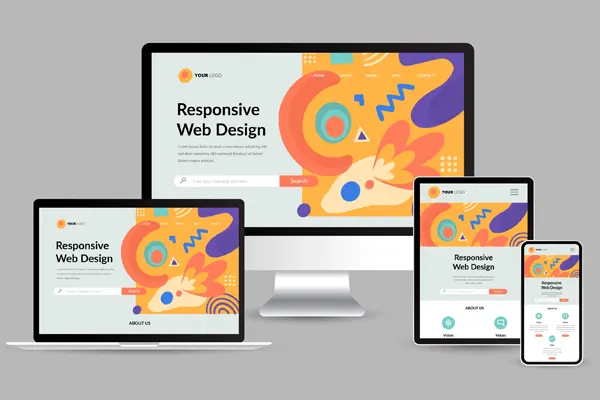Who Is My Content Marketing Audience And How To Reach Them?
User experience (UX) is a critical driver of Google SEO, shaping how visitors interact with your website and how Google ranks it. For small businesses like spice shops or art schools, a seamless UX can boost rankings for keywords like “organic spices Malaysia” or “art classes near me,” while a poor UX can push customers away. Google’s algorithms prioritize sites that are fast, intuitive, and engaging, making UX essential for staying competitive. This article explores how UX influences SEO, why it matters, and actionable steps to improve it, ensuring your business thrives in search results.
1. Why UX Matters for Google SEO?
Google’s mission is to deliver the most relevant and user-friendly results, and UX plays a pivotal role in achieving this. Since the 2021 Core Web Vitals update, Google has emphasized metrics like page load speed, interactivity, and visual stability, which directly tie to UX. A spice shop with a slow-loading site risks losing customers searching for “best organic spices,” as Google favors faster, more accessible competitors. A positive UX reduces bounce rates and increases time on site, signaling to Google that your content is valuable and deserves higher rankings.
2. Key UX Elements That Impact SEO
A great UX goes beyond aesthetics—it encompasses speed, navigation, and accessibility. For example, an art school’s website targeting “Kuala Lumpur art classes” should load quickly, offer clear menus, and work seamlessly on mobile devices. Fast load times, measured by metrics like Largest Contentful Paint (LCP), ensure users don’t abandon your site. Intuitive navigation helps visitors find information, such as class schedules, without frustration. Accessibility, like alt text for images, ensures inclusivity and boosts SEO for keywords like “organic spices benefits.” These elements collectively enhance engagement, a key factor in Google’s ranking algorithm.
3. How UX Drives User Engagement and Rankings?
A well-designed UX encourages users to stay longer and explore more, directly impacting SEO. Imagine a customer landing on a spice shop’s blog about “health benefits of organic spices.” If the page is easy to read, mobile-friendly, and free of disruptive pop-ups, they’re likely to engage deeply, reducing bounce rates. Google interprets high engagement—longer dwell times and more page views—as a sign of quality, boosting rankings. Conversely, a clunky UX with confusing layouts or slow pages drives users away, signaling to Google that your site isn’t meeting user needs, which can lower rankings.
4. Practical Steps to Improve UX for SEO
Enhancing UX requires a strategic approach. Start by optimizing site speed using tools like Google PageSpeed Insights to address issues like unoptimized images on a product page for “organic spices.” Ensure mobile-friendliness, as most searches occur on smartphones, by testing with Google’s Mobile-Friendly Test. Simplify navigation with clear menus and logical page structures, making it easy for users to find “art classes in Penang.” Add descriptive alt text to images and use readable fonts to improve accessibility. These steps create a seamless experience, aligning with Google’s UX-focused algorithms.
5. Common UX Mistakes That Hurt SEO
Many businesses undermine their SEO with poor UX choices. Overloading pages with intrusive ads or pop-ups can frustrate users, increasing bounce rates. For instance, a cluttered art class registration page may deter sign-ups, signaling low quality to Google. Ignoring mobile optimization is another pitfall, as a site that’s hard to navigate on phones alienates users searching for “buy organic spices online.” Failing to test for accessibility, like missing alt text, can also limit your audience and SEO potential. Regular UX audits with tools like Lighthouse can catch these issues early, protecting your rankings.
6. Measuring UX’s Impact on SEO
To gauge UX effectiveness, monitor key metrics. Google Search Console’s Core Web Vitals report highlights speed and stability issues, such as a slow-loading blog on “organic spices Malaysia.” Use Google Analytics to track bounce rates, time on page, and mobile traffic, revealing how users interact with your site. For example, high engagement on a page about “art classes for beginners” indicates strong UX. Tools like Hotjar can provide heatmaps to show user behavior, helping you refine UX and maintain SEO performance as Google’s algorithms evolve.
7. The Value of Professional SEO Expertise
Optimizing UX for SEO is complex, blending technical and user-focused strategies. Professional SEO services can audit your site, identifying UX issues like slow load times or poor navigation, and implement solutions tailored to keywords like “organic spices” or “art classes.” They ensure your site meets Google’s standards, from speed to accessibility, driving higher rankings and engagement. Ready to elevate your UX and SEO? Contact our expert SEO team to enhance your site’s performance and attract more customers!
Conclusion: Boost SEO with Exceptional UX
User experience is a cornerstone of Google SEO, influencing how users engage with your site and how Google ranks it for keywords like “organic spices” or “art classes.” By optimizing speed, navigation, and accessibility, you create a seamless experience that boosts engagement and rankings. Don’t let poor UX hold your business back—contact our professional SEO team today to audit your site, enhance UX, and dominate Google search results. Let’s make your website a user-friendly powerhouse!
Our Services
Related News
Frequently Asked Questions (FAQ)
How often should I test my website’s UX?
Conduct UX audits every 3-6 months or after major updates to ensure speed, navigation, and accessibility remain optimal.
Does UX affect paid ad performance?
While UX doesn’t directly impact ad rankings, a strong UX improves landing page conversions, enhancing ad campaign success.
Can I improve UX without technical expertise?
Simple fixes like clear menus or image compression are doable, but advanced optimizations like code streamlining often require professionals.









